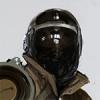Operational Organization & Basic 6DOF combat Theory
-
Featured Topics
-
Topics
-
wolfgangam ·
Posted in Windows1 -
0
-
5
-
1
-
3
-
0
-
Joseph_Stalin ·
Posted in General Discussion4 -
Evan37 ·
Posted in New Builds and Planning5 -
IlanMS ·
Posted in Peripherals9 -
Frossty ·
Posted in Graphics Cards9
-


















Create an account or sign in to comment
You need to be a member in order to leave a comment
Create an account
Sign up for a new account in our community. It's easy!
Register a new accountSign in
Already have an account? Sign in here.
Sign In Now